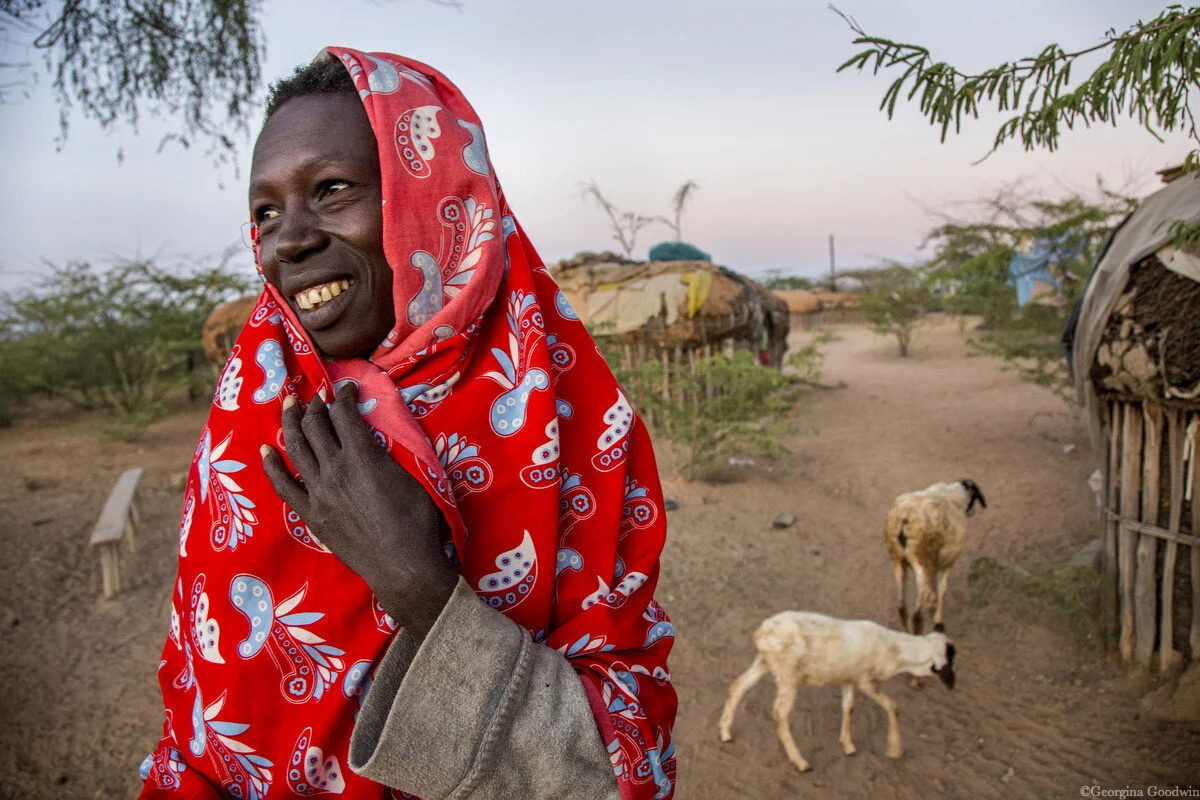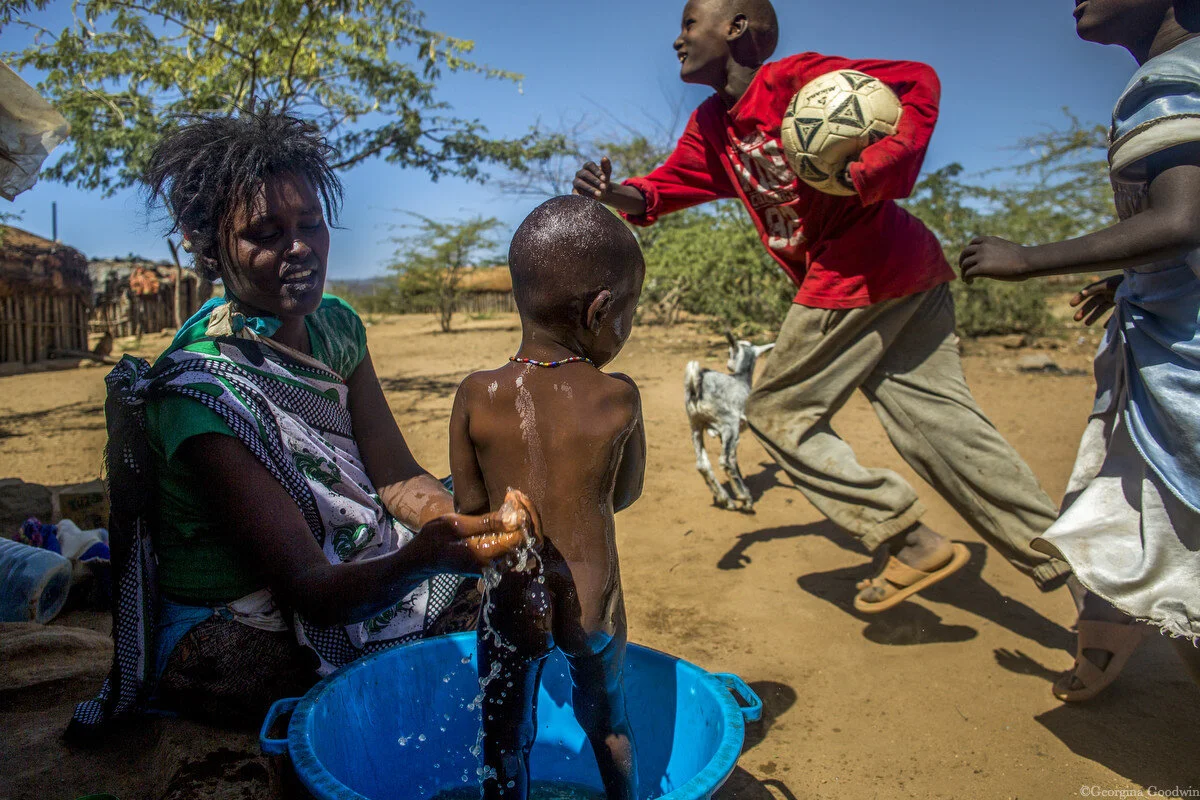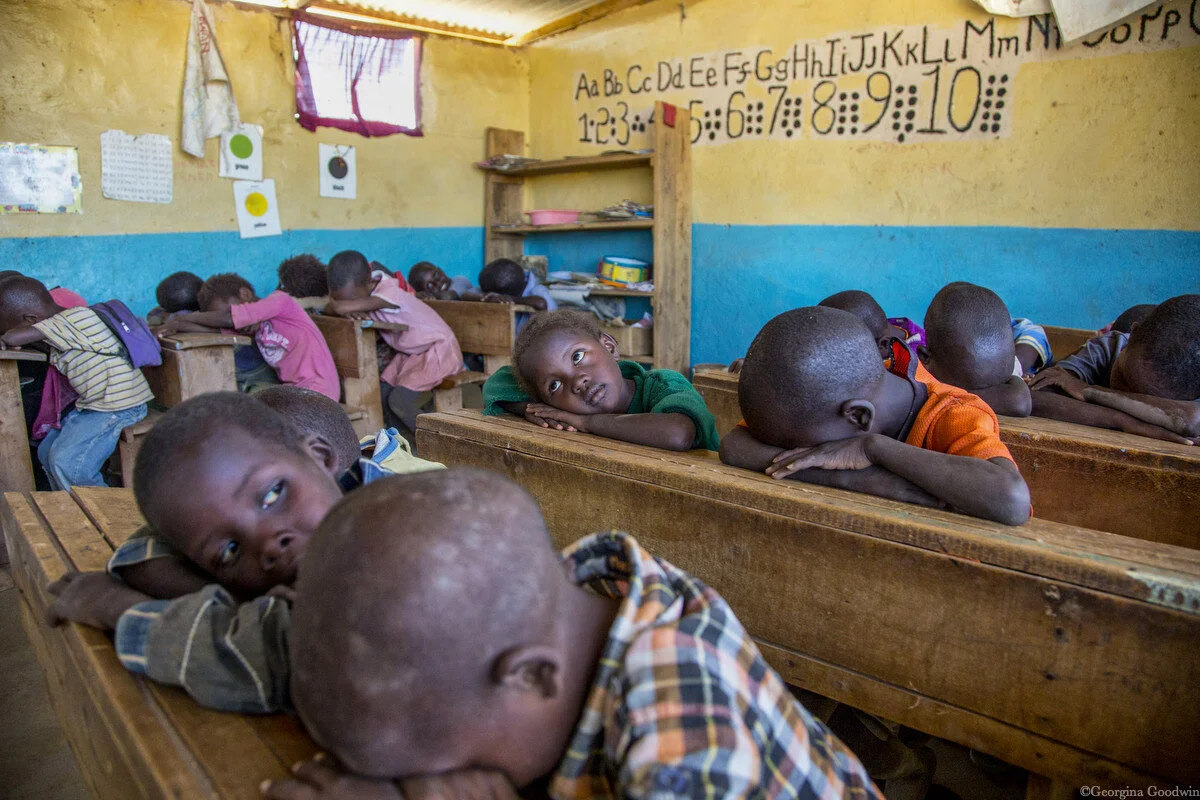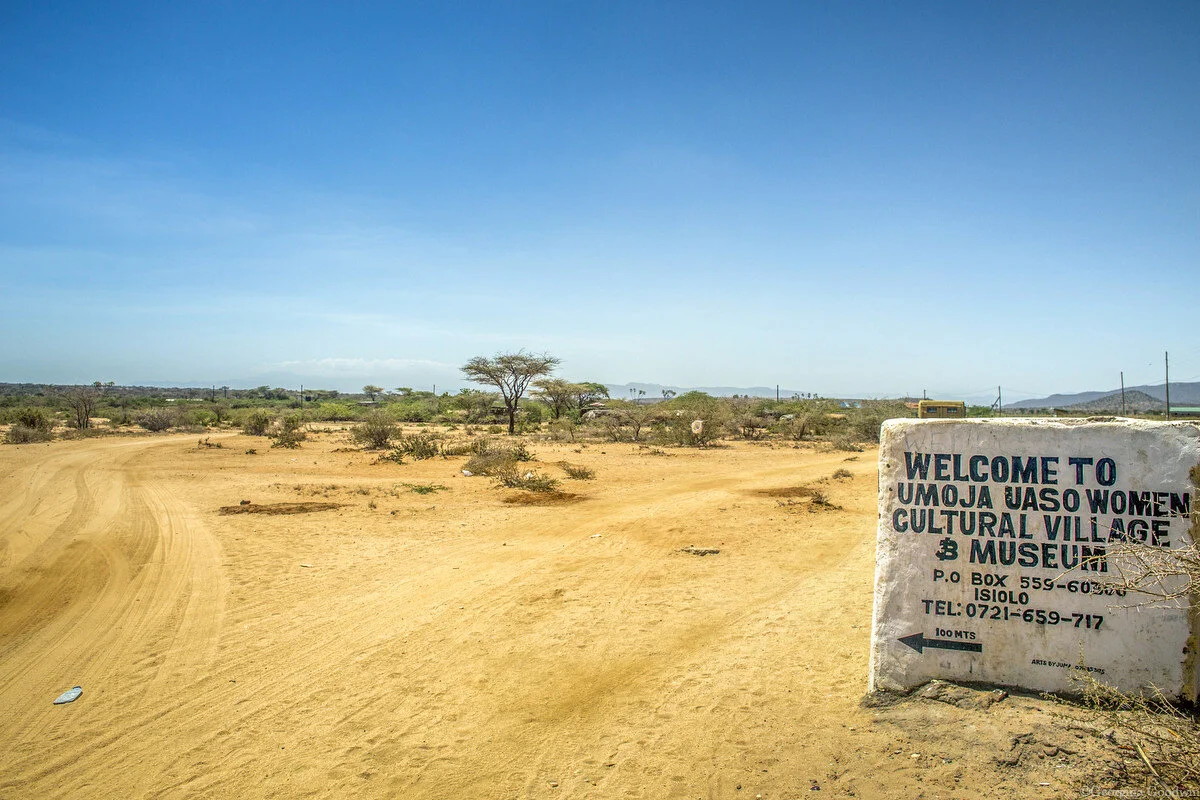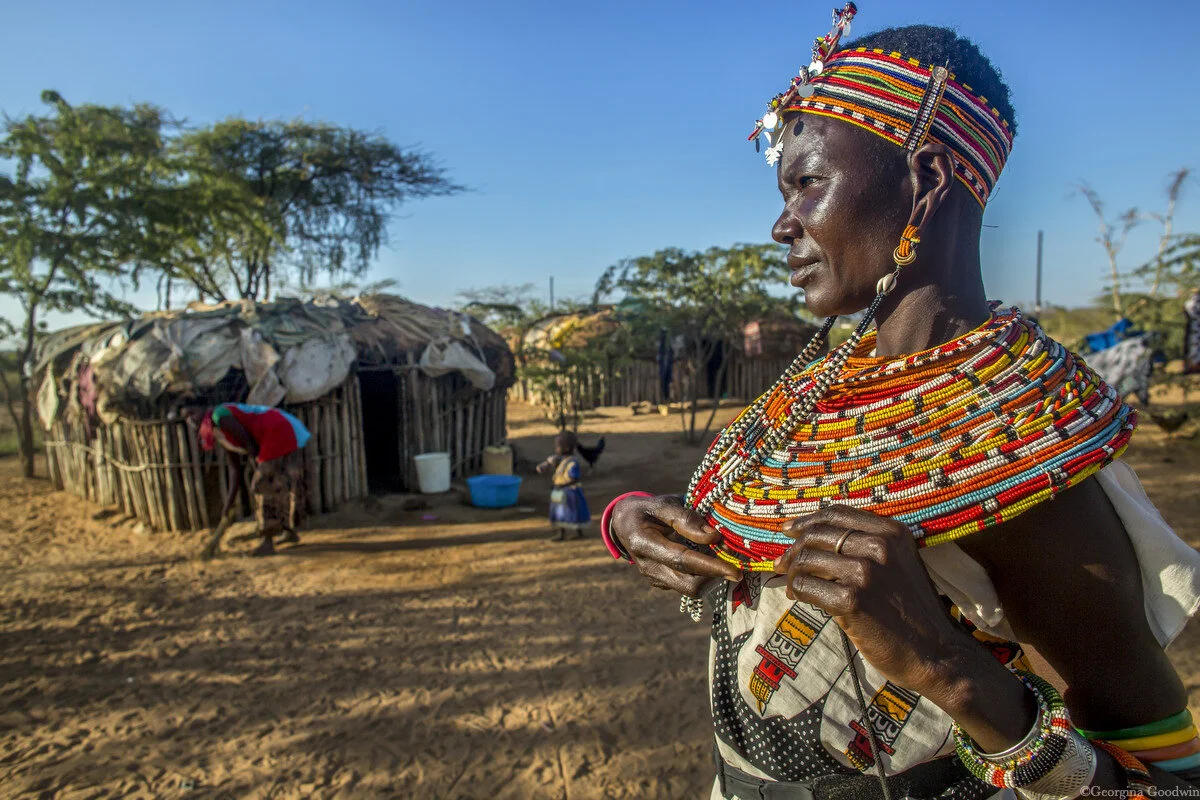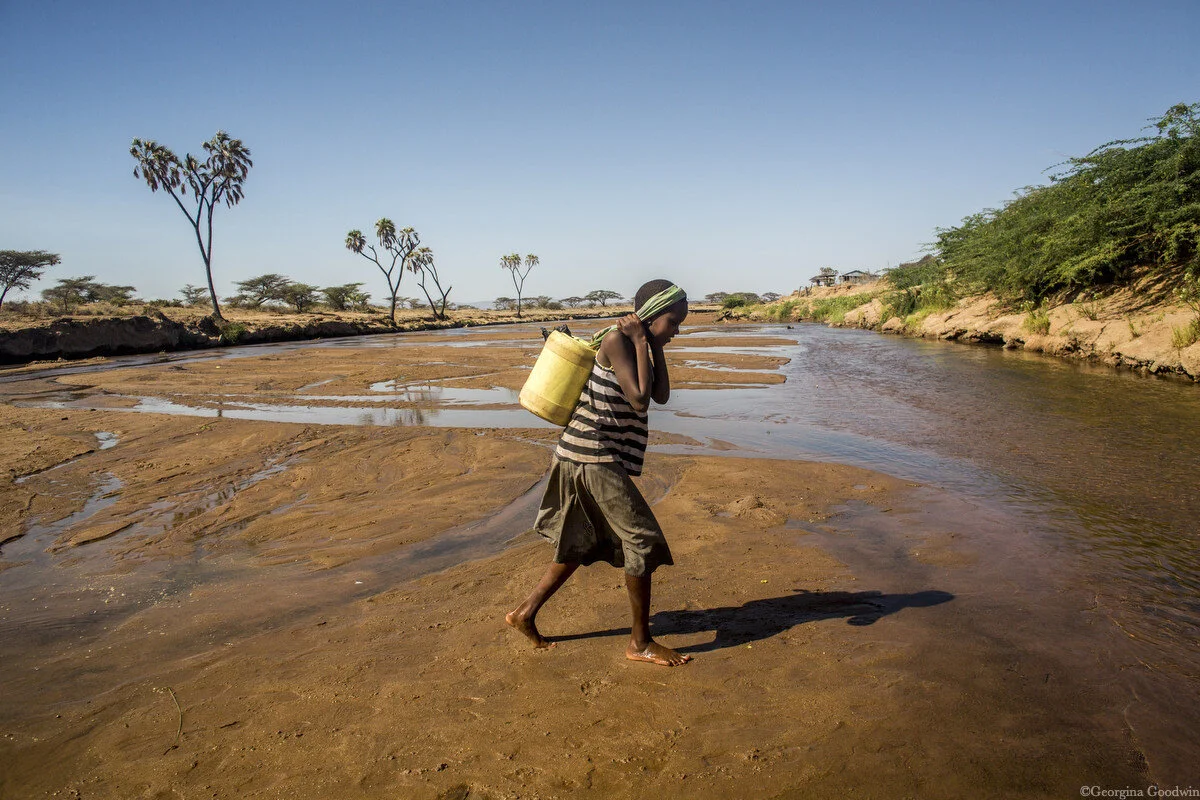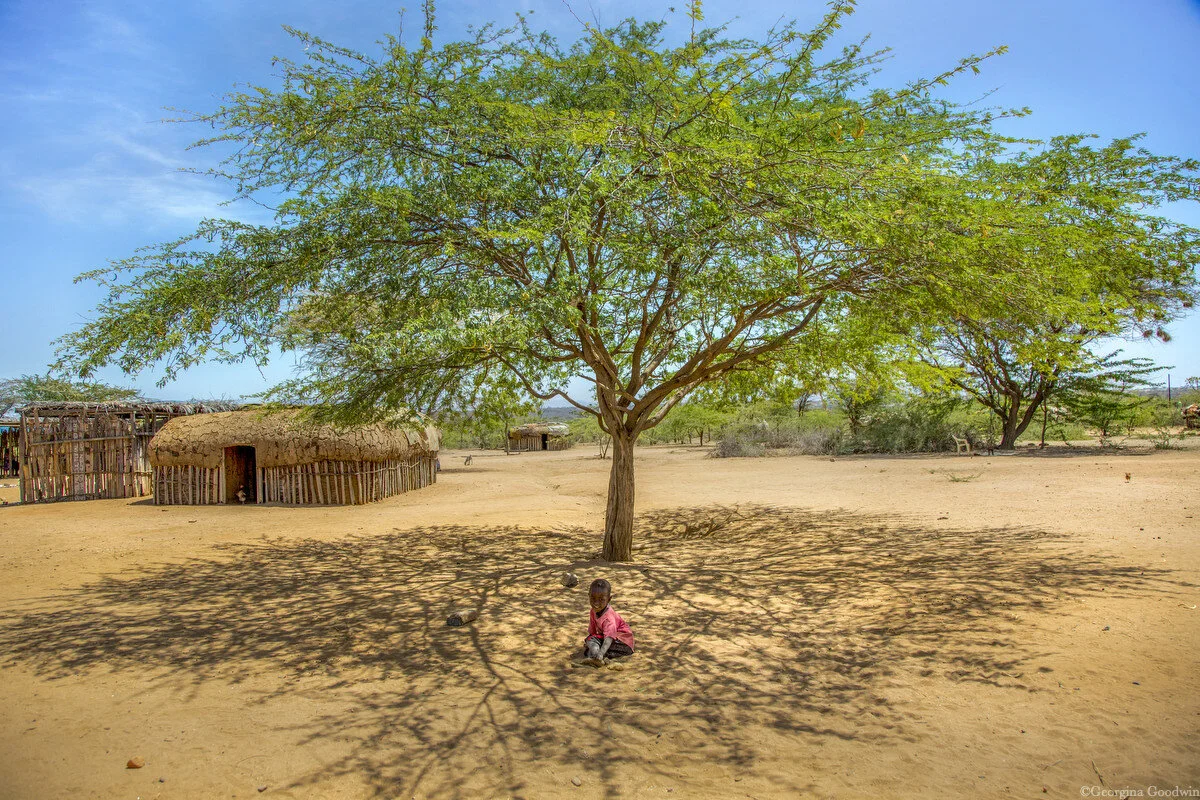The Umoja Women's Village - also known as “The Village where Men are Banned” - is a women-only village in northern Kenya’s arid Samburu County. Started in 1990 by a Samburu woman named Rebecca Lolosoli, this community was created as a response to violence against women, forced marriage, rape and female genital mutilation. In 2015, documentary photographer and Canon Ambassador Georgina Goodwin visited and stayed with the women on a story for The Guardian. At that time there were 47 women and 200 children, and the village was thriving. The Umoja women keep Samburu art and culture alive through creating traditional beaded jewelry, which they sell to visitors at the nearby Samburu National Reserve for income. They also earn money from visitors who come to visit their village, and those who pay to stay at a campsite run by the women located less than a mile from the village. “Umoja” means “unity” in Swahili and this community shows just that. Through their spirit and uniquely-devised systems these women help each other to stay safe, to earn an income and to maintain their freedom.
Norkorchom is not from Samburu but from Turkana, a vast and dry area to the north of Samburu. In 2015 she was the newest member to the Umoja Women's Village, a place where she says “every day I wake and smile."
“It is not good to be unmarried and have children in our culture,” 23-year-old Antonella says as she washes her baby using water she collected early that morning from the Ewaso Nyiro River. “It is worse not to have any children. Without children we are nothing.”
Judia (center) came to Umoja when she was 13, running away from home to avoid being sold into marriage. “Here I am surrounded by help and support,” says Judia, her long braids held back by colorful lengths of beads. She joins other women from the women's village as they continue the strong Samburu traditions of singing and dancing.
Mary Lokiding bathes at sunrise in the Ewaso Nyiro River that runs through northern Kenya's arid and beautiful Samburu County. Mary comes to the river every day from the Umoja Women's Village. “It’s beautiful here in the morning,” Mary says. “The water is always so cool. Here I feel that I’m really free.”
Memusi inside her home at Umoja. As the official greeter for the Umoja Women's Village, her role is to meet visitors on arrival and adorn them with bead jewelry made in the village. Memusi ran away from her husband after just one day of marriage, in 1998. “I was traded for cows by my father when I was 11 years old,” she says. “My husband was 57.”
In 2015, Umoja Women’s Village had 200 children, a large number for a women-only village. When asked about the number of children, the women laugh and reply, “We still like men. They are not allowed here, but we want babies and as women we have to have children, even if you are unmarried.”
The sign on the road from Archers Post to the Umoja Women's Village in Samburu, northern Kenya.
Lotukoi is the only man allowed into Umoja. He arrives in the village every day, before sunrise, to tend to the herds. “Children, firewood and cooking are women’s business, and for men, it is us to look after the animals,” he says.
Jane Leng'ope adorns her beads in the morning as residents of the Umoja Women's Village begin to wake up and sweep the outsides of their homes. Beads are believed to make a woman feel feminine and beautiful, varying from neck rings to bracelets and anklets. By continuing this Samburu tradition, the Umoja women are able to sell some jewelry to visitors and earn an income.
10-year-old Asunta collects water from the Ewaso Nyiro River, the only water source for the Umoja Women's Village, a walk of less than a mile away.
Nroti Lekiluai drinks tea in Rose Lekanta’s house at the Umoja Women's Village.
Gabriella gathers firewood outside the Umoja Women's Village’s “boma,” or enclosure. "It's important that we look for firewood during the day when it is light; this is when we are safe from wild animals and even from drunk men," she says.
China Laprodati sits with her baby while making traditional Samburu beaded jewelry which she then lays out for visitors to the village to look at and hopefully buy.
The “Tree of Speech,” inside the Umoja Women's Village. "When anyone has anything they wish to say to the rest of the women, this is where we come to listen."
Rest time in the Umoja Women's Village.
Georgina Goodwin
is a documentary photographer and Canon Ambassador born and based in Kenya. Her work focuses on social issues, women and the environment. She is best known for her award-winning coverage of Kenya’s post-election violence, cancer in Kenya, the Westgate terror attack, and Africa’s refugees - her image of 30 seconds old refugee baby Marian winning British Journal of Photography Portrait of Humanity Award and Grant 2019.
Georgina is a contributor to Getty Images, Everyday Climate Change and Everyday Extinction, and a member of WomenPhotograph and World Press Photo/Everyday Africa’s African Photojournalism Database. Georgina’s media agency Georgina Goodwin Images (aka ‘GGImages’) works with and promotes local media talent globally, specializing in Africa. She is a certified trainer for Canon and journalism consultant for The Aga Khan University teaching workshops across Africa, and co-founder of AfricaFotoChat, an online discussion platform that connects photographers in Africa to the global photography industry. Georgina was also a speaker at TEDxKakumaCamp 2018, the first TED talks to be held at a refugee camp.
Georgina’s work has been published by The New York Times, Elle, Vogue, Agence
France-Presse and many others, and has been exhibited in New York City’s Times Square, Tokyo, the Louvre Museum in Paris, and Bogota, Colombia, among other places.
For more on Georgina: https://linktr.ee/georginagoodwin
Follow Georgina on social media @ggkenya
THIS ARTICLE WAS ORIGINALLY FEATURED ON THE GUARDIAN HERE AND HERE.

